HISTORY & DEVELOPMENT OF NORTHERN SHAOLIN TEMPLE BOXING
This is a very general history of the Northern Shaolin Temple and Southern Shaolin Temple. I apologize in advance – All of the dates, locations, and persons and their names/spellings/pronunciations that I as a westerner have compiled from too many conflicting and disparate sources are all that I’ve had to work with. My goal is to give at least a general understanding of the temple’s history, and what I’ve personally elected to accept as honest and correct documentation.
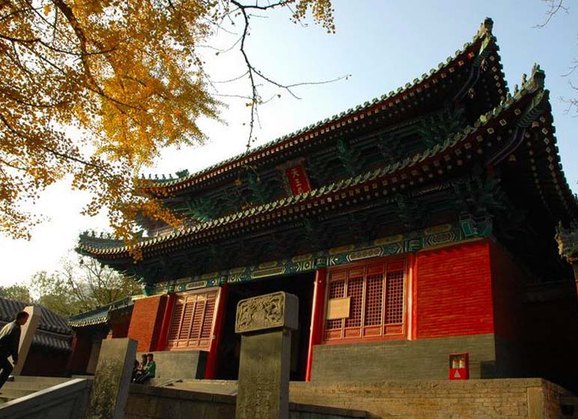
Location
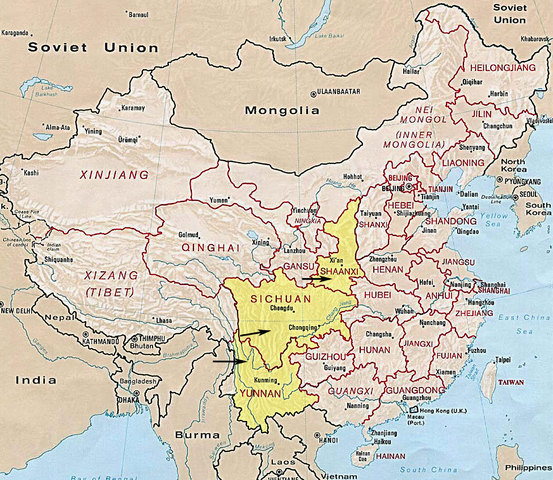
The first temple was built on Mount Song, which is one of the Sacred Mountains of China, located in Henan. It was built near it’s central peak, Shaoshi, by Emperor Xiao Wen in what most reputable scholars agree to be 495 AD. It was meant to be a gathering place for Buddhists to come together from all over the country. A nearby forest was being replanted by the Emperor’s command with young, new trees. Because this was an area populated by young (Hsiao, “small”) trees (Lin, “forest”) the temple became known as “Shao Lin”.
Hinayana Buddhism, the prevalent form practiced in India at the time, was present in China as early as the 1st century, but China had already established a long history of spiritual/philosophical doctrines (Taoist Meditation has documents stretching back to 550 BC).
Around 540 AD after the first Shaolin Temple had already been established, a Buddhist Monk named Bodhidharma also traveled to China to visit the Emperor. He had come to visit China because of the Emperors drive to have many of the Buddhist texts, available at the time only in Sanskrit, translated into Chinese. There were many pilgrimages from India to China in order to aid in the translation of Buddhist texts from Sanskrit to Chinese. The Emperor’s personal agenda of spreading his at-the-time-favored religion of Buddhism would only be met if more people were able to read and understand it, so he facilitated this process. He, like most religious ardents, believed that it was acts and deeds, not the personal transformational process that following a spiritual path brings about, was most important and would be his guaranteed acceptance into Nirvana. Da Mo was a practicing monk, and even though his whole life was full of Buddhist Acts, he understood the truth – in the Eightfold Path ‘acts’ are only a part of it, there is also Thought, Speech, etc that must be ‘modified’ as well (which is all just a very smooth method for bringing minds and spirits vicariously into the legitimate Way of Being required for true Buddhist Enlightenment to occur). This is Especially true if, as in the case of the Emperor, the acts of ‘good karma’ were being performed by other people. This difference of opinion separated them.
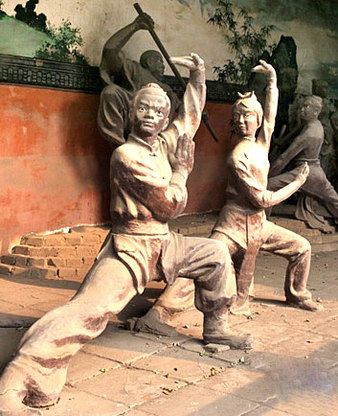
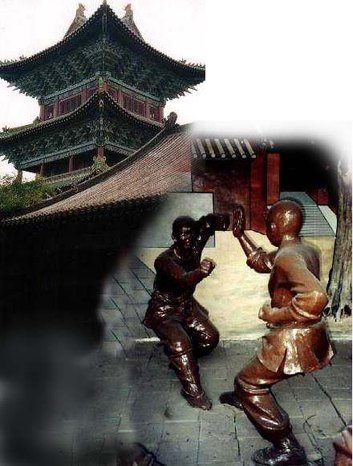
He travelled to the Songshan Mountain monestary and taught Indian Buddhist meditation at the Shaolin Temple. When Bodidharma (which became Ta Mo in Chinese) first arrived at the temple, he was initially refused admittance! It is said that he made a nearby cave his retreat where he sat facing the cliff on the peak behind the temple in meditation for nine years. He observed that the monks, sitting in meditation for long periods, grew weak and so the Yi jin Jing (Muscle Bone Classic) was created as a series of exercises to stimulate circulation and to limber up muscles and joints. He is also given credit for the design and creation of Arhat or LoHan boxing. But other historians have reported that the monks within the newly-built temple in Honan were already practicing the 18 Hands of Luohan Boxing, techniques for revitalizing their bodies & in turn, their minds. Chinese Kung Fu had been a codified system of methods & techniques for 2000 years (some scholars give or take a few hundred years) prior to Ta Mo’s visit, and a bronze smelter was found dating about 2000 BC along with historical records of dynastic rule rising and falling so martial techniques had already been established.
As relates to Bodhidharma/Da Mo/Ta Mo, a connection was made between the postures of Ta Mo’s Indian Yoga & the old Luohan Boxing. The Yellow Emperor’s Treatise on Medicine had already used animal-frolicking exercise to unite the mind/body condition by developing the state of ch’i and strength in the human body, & the physical posturing was clearly the same from both the Indian & Chinese perspective. The need to enhance one’s physical/mental being for the purpose of spiritual development & augmentation of those abilities is identical both in Chinese martial arts & philosophy. The two ancient physical yoga’s of India & China united to become one. United through the spiritual pursuit of Dharma & personal enlightenment. As time went on, this Buddhist sect became more and more distinct because of the martial arts being studied. Chan Buddhism was born.
What is certain is that by the end of the Sui Dynasty (581-618) there was a body of fighting monks maintained at the temple. Emperor Gaozu (Li Yuan) was the first emperor of the Tang Dynasty. He was defeated by a usurper named Wang Shichong. Unfortunately for the monks of the temple, Wang Shichong’s new ‘territory’ annexed the temple and it’s surrounding areas. This was not to his advantage. Not long after, Wang Shichong defeated Li Yuani, where he was captured alive.
At some point a group of armed Shaolin monks attacked Shichong’s troups from behind and liberated prince Li Yuan. The son of Li Yuan was named Li Shimin, who eventually became the 2nd emperor of the Tang dynasty. He was also known as Taizong. He was grateful for the the service of the Shaolin Monks to his father and according to the inscription found on a stone tablet kept at the Shaolin Temple, were later rewarded by Li Shimin with official posts and the ‘official’ assignment of warrior monks being kept as a guard (kind of standing ‘army’) within the temple. The temple as a whole was given as gratitude for service several hundred hectares of the surrounding forest, a large cauldron that to this day can be seen by tourist groups visiting the temple, and to keep what amounts to a standing army on the temple grounds at all times in case the emperor had need of their services again. They were also given an exemption from a few of the normal rules of monastic life – Shaolin Monks were allowed to eat meat and to drink alcohol. During the battle that saved his father’s life, 13 monks were most prominent, and to reward them separately from the rest of the gifts he bestowed upon the temple they were each given a special robe individually.
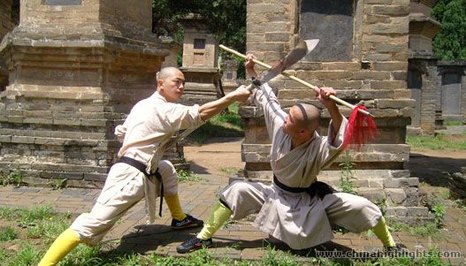
There is a reference to an abbot of the Shaolin Temple named Fu Yu, at the beginning of the Song dynasty. It is said that he was responsible for bringing large amounts of martial artists together to train in the temple for a 3 year period. This happened on 3 separate occasioins. During these periods of times, a great dissemination of martial information occured amongst themselves. This is certainly responsible for Shaolin Temple having a more permanent prominance as a centre of martial knowledge and skill.
By the time the Ming Dynasty (1368-1644) rolled around, it was established that the monks at the Shaolin Temple were martial arts practitioners and their fame spread across all of China.
They were again employed in the service of the emperor, this time as a defense against the invading Japanese.
Shaolin Temple had survived all of China’s political and social upheavals intact until a warlord who is named Shi Yousan attacked the temple itself in 1928, destroying much of the recorded history and knowledge stored there.
Later, once the People’s Republic of China had come into being, the so-called Cultural revolution was brought about. This made it impossible to practice any religion or spiritual development methods for the monks and laypeople alike. But the temple itself still stood – so the Red guard was sent to physically destroy what the new communism and ‘laws’ could not. Much of the property, artwork, and religious items were lost.
Life in The Temple
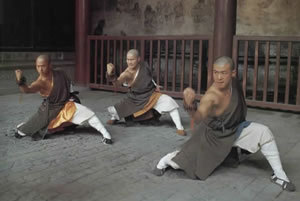
Within the confines of the temple, monks began to develop these martial arts into methods & styles that would become distinctly Shaolin.Being located in central China, Shaolin Temple became the ‘crossroads’ of many walks of life. From military personnel seeking a peace their warrior life could not offer, to government ‘criminals’ (criminals or heroes, depending upon Who-won-What battle), provided the appropriate respect to the monastery & it’s practices was maintained, all were welcome within the walls of Shaolin Temple.
Being isolated in the middle of nowhere (a young forest to be exact), the temple was often a target for roving bandits.What a better target, a bunch of monks & nuns who have sworn off violence & the ways of the world?Relying on imperial guards for protection was only as reliable as the next bribe or shift in government opinion. Thus martial arts found yet another reason to be developed within the temple – the monks lived there, so the monks should be the guardians of the temple.
Traditionally, students involved in Shaolin training spent their lifetime developing their mental & spiritual abilities as well as their physical prowess. Much like modern day universities, China’s old temples were involved in teaching anyone who wished to learn the fruit of the old monk’s studies. These studies included, but were not limited, too calligraphy , math, history, manners and customs, Taoist and Buddhist philosophies, painting, music, textile work, agriculture, pottery, poetry, medicine and cooking. Often, people from the surrounding countryside would come to the temple to ask advice pertaining to their fields or the medical condition of a village member, or even to learn specific fields of study themselves. And on many, many occasions, Buddhist monks would practice service to others by traveling far & wide to offer their knowledge for the sake of helping others.
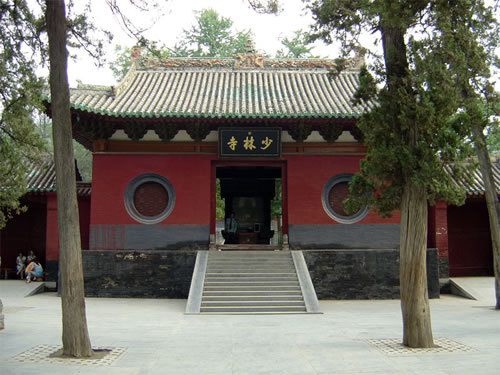
History offers us the curious paradox of these spiritual masters becoming ‘masters of death’. With the advent of boxing in the temple, Shaolin monks were not about to become warriors with plunder, wealth & murder as their new religion. Quite the contrary. Shaolin Boxers do not try to outright kill. Ever. It is against the Buddhist doctrine, in some sects taken to extremes (such as filtering cups of water before drinking, or brushing away a sitting surface, in both instances to prohibit the unintentional killing of microscopic organisms). In truth, anyone who truly studies martial arts of any origin understands that the knowledge gained from such study actually minimizes the number of altercations one encounters, & in those few rare moments, one properly skilled uses the appropriate amount of force. No more. And no less. We learn about violence & conflict in order to help ourselves & others avoid it, to not become a victim of it. We may simply defend ourselves at first with simple deflections or evasions of a blow intended to harm us, but with the persistence of the attacker, or the intensity of the attack, or even the martial ability of an aggressor to attack us, we may find that an appropriate response does in fact lead to inflicting pain upon another. If the opponent(s) offer a fatal situation, we must be prepared to defend ourselves/others. The true applications of martial arts as practiced by beings on a spiritual path is to subjugate The Self, not others. To make ego subservient to us, not vice-versa. We use physical training to subjugate the body to our will, it being most readily under our conscious control. With this platform in place, we are able to launch an offensive on our own inner demons, our own shortcomings, that manifest from the psychological & spiritual realms of our being. This even became a famous axiom of Mao Tse-Tung when he espoused to the people “Civilize the mind, make savage the body.”
The biggest problem with something as wondrously incredible as The Shaolin Temple is that most of what becomes ‘history’ are the fantastic stories being more embellished from generation to generation, and every ‘historian’ wanting to be given credit for Their version. Normally this type of thing has no bearing on me whatsoever – I am a practitioner of what I, my peers, my judges, and the effects upon my life have convinced me is 100% Authentic Chinese Kung Fu. For something to cross so many boundaries, for so many venues to all lead to a single pinnacle of truth without any opportunity for question or doubt is very rare in one’s life.
NORTHERN SHAOLIN TEMPLE BOXING AS ART
Just for the sake of discussion I’m going to be using the terms Northern Shaolin & Southern Shaolin to describe the two most major distinctions in the popular and most commonly seen Chinese Martial Arts today. Generally speaking, these styles are reputed to have been developed in or derived from the Northern Shaolin Temple on Mount Song in Hunan/Henan Province or the Northern Shaolin Temple in FuJian/FuKien Provinve. Because of the commonroots, and this invisible line that separates north China from the south (?!? Seriously?) most styles are grouped either by their association (real or believed) with a specific temple (North or South), or because of their similarities in manner and technique which “of Course” means that they must’ve come from that respective temple.
Northern Shaolin & Southern Shaolin are much more similar than different in terms of the types of techniques that comprise these arts. Where there are separations are in 1)the Way that they are expressed, and because of those different means of expression 2)the Methods and Concepts used to teach through the choreography of the forms (Tao Lu, ‘way-path’, what the Japanese Martial Arts refer to as Kata, in Korean Martial Arts these are Hyeong, Pumsae/Poomse(ae), etc). One of the things that makes Northern Shaolin ‘Northern Shaolin’ is the length and breadth of it’s movements. Identical movements/techniques being performed by both ‘northern’ and ‘southern’ practitioners will have a difference in ‘size’ appearance: Northern Shaolin will more often than not use a fully extended backfist in a Bow Stance (Front Stance, Archer’s Stance, etc), while a Southern Shaolin practitioner will be commonly seen using it in a Horse Stance or Cat Stance. A sequence of movements from a Northern Shaolin form will be elongated & occupying a much greater amount of space than those of their Southern counterparts.
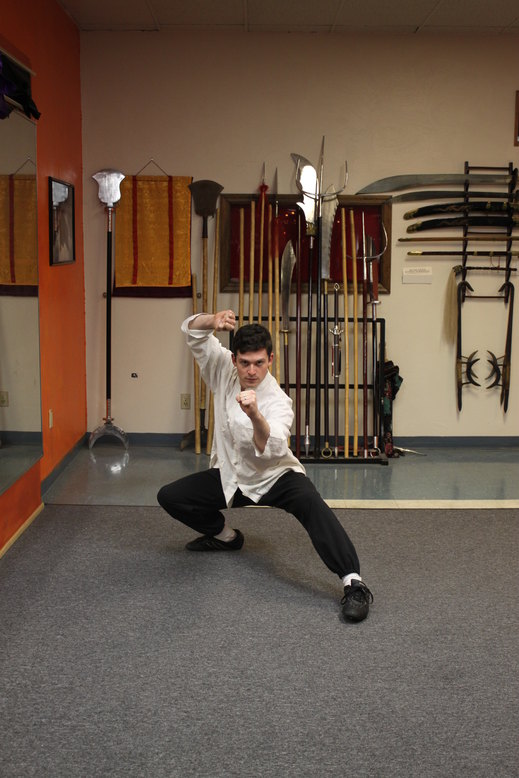
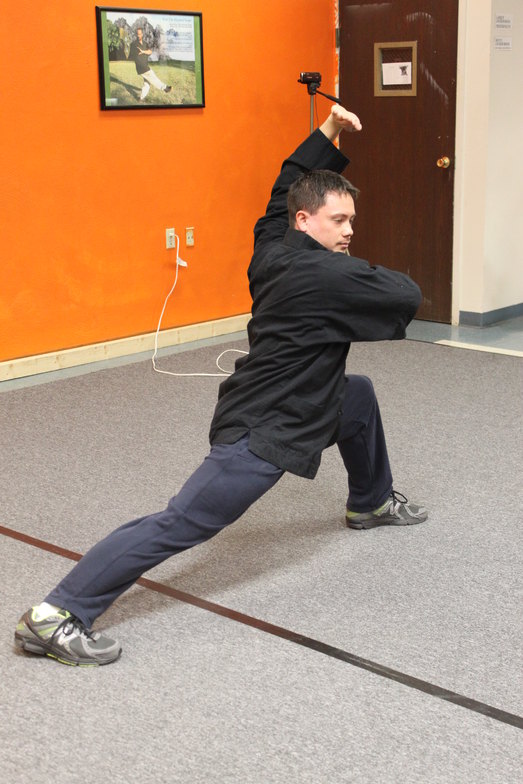
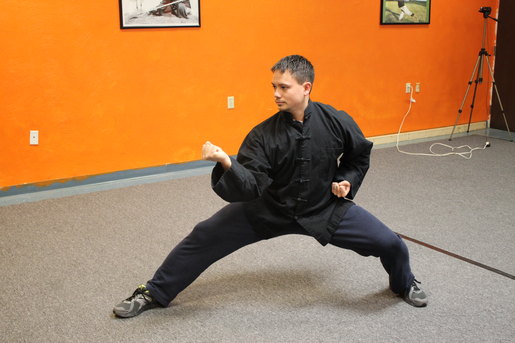
PHYSICAL SHAOLIN TEMPLE BOXING CLASSES
At Black Mountain Spirit, the emphasis on physical development is quite impressive! Unlike other sports or physical activities where only 3-5 physical skills are necesary, traditional Chinese Kung Fu requires a much higher level of physical and mental ability, and the number of skills necssary to be Truly proficient in Northern Shaolin can number in the hundreds. There is the need to not only perform the techniques as choreography, the same way that a dancer or performer on stage must move correctly or execute technique properly, but it also has to work. That means that when using a block/parry/deflection, it has to be strong enough or possessed of the approppriate amount of force to resist the attacker’s incoming force. If you’re using a more advanced, internal arts approach and you’re using sensitivity and listening skills to remove yourself from harm or redirect the apponent’s attack, you have to have already trained your mind and nervous system to accomplish those goals. If you’re going to use an offensive technique to slow down or disable your opponent, you have to have the strength and speed to actually hurt them in order to get the desired response. All of the flexibility, the strength and endurance training, the speed and hand/eye coordination drills are all designed to bring you to the pinnacle of physical development necessary for you to be a complete martial artist.
BLACK MOUNTAIN SPIRIT SHAOLIN KUNG FU FOR SELF DEFENSE
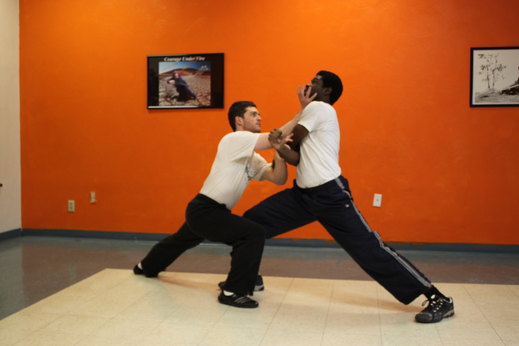
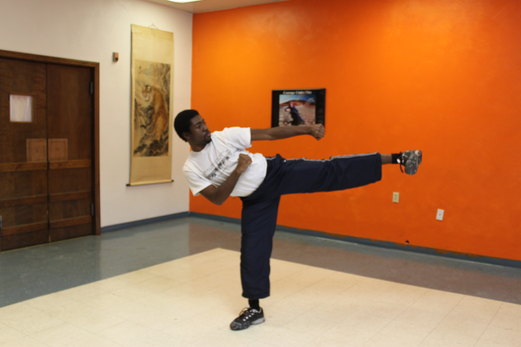
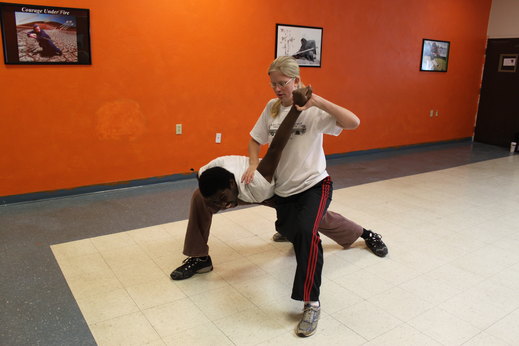
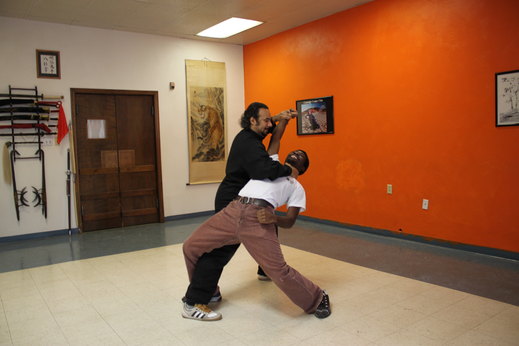
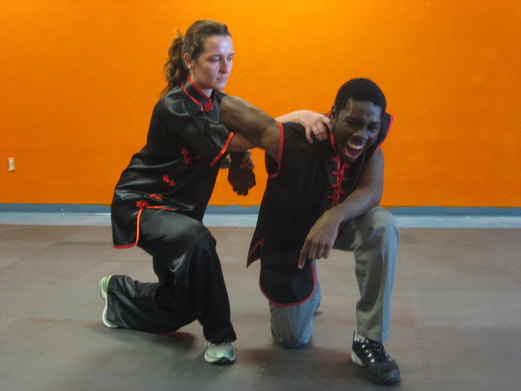
THIS IS WHAT A WELL ROUNDED HOLISTIC APPROACH TO HEALTH LOOKS LIKE
The variety of techniques available to practitioners of Ho’o Chin Pai Northern Shaolin Temple Boxing is simply staggering. When you combine the foundational principles of good stance work with the combative techniques of hand and foot, you have a very impressive, very complete, vocabulary of movement. This vocabulary allows you to protect yourself in any given situation, whether you’re fighting someone who has grabbed you ,is trying to throw you to the ground, or repeatedly striking at you. This vocabulary also allows you to cater your physical development from a health perspective whether you’re just looking for a little bit more stamina, greater flexibility, or serious body-sculpting.
GET THE STRESS OUT
If you’re looking for a quick stress release, this is the way to go. All of the joints have to open up, and all of the muscles have to obey prepared to move quickly and react to whatever situation may arise.
You are going to sweat 🙂
You are going to get stronger.
You will have serious, serious, Strength, Flexibility, Stamina and Endurance.
You will deal with stressful situations with Calmness, and Assuredness.
You will gain Extensive Knowledge of both Empty Hand and Weaponed combat – not just the usage of weapons, but the Defense against them as well.
This is Kung Fu at it’s Best!!!
This is the legacy of this authentic Northern Shaolin lineage, being handed down from generation to generation. The tradition that is classical Chinese Kung Fu is being very well preserved and maintained here at Black Mountain Spirit by it’s instructor and all of the students involved it this glorious legacy. The history housed within it’s 5 millennia of thought and philosophy are absolutely and without question magnificent!
